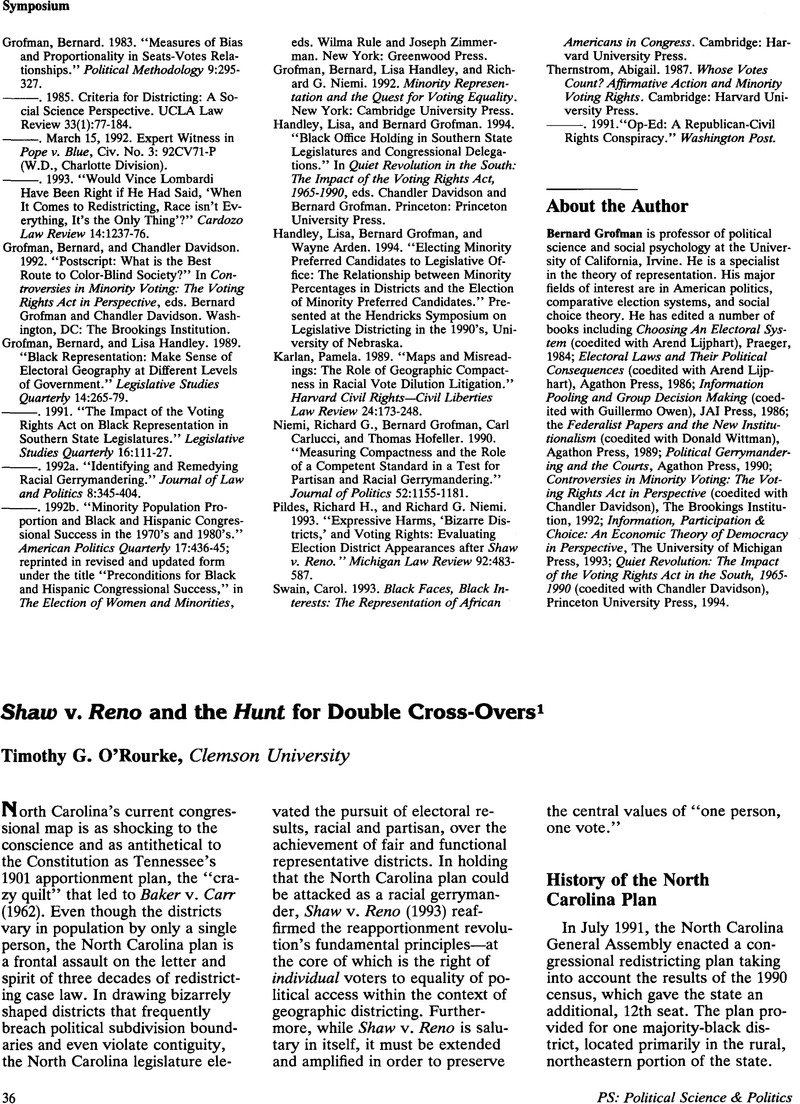Article contents
Shaw v. Reno and the Hunt for Double Cross-Overs
Published online by Cambridge University Press: 02 September 2013
Abstract

- Type
- Discussion
- Information
- Copyright
- Copyright © The American Political Science Association 1995
Footnotes
Some of the ideas presented here are drawn, in modified form, from O'Rourke 1994. A much longer presentation of my ideas will appear in a forthcoming issue of the Rutgers Law Journal. In the interest of disclosure, I note that I served as an expert witness, pro bono, for the plaintiffs in Shaw v. Hunt (1994). I also testified as an expert for the plaintiffs in Johnson v. Miller, a Shaw-type challenge to Georgia's 11th Congressional District.
References
- 1
- Cited by




